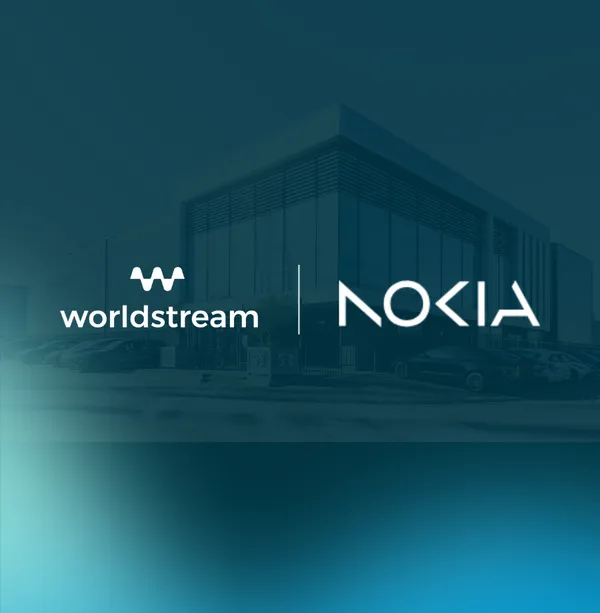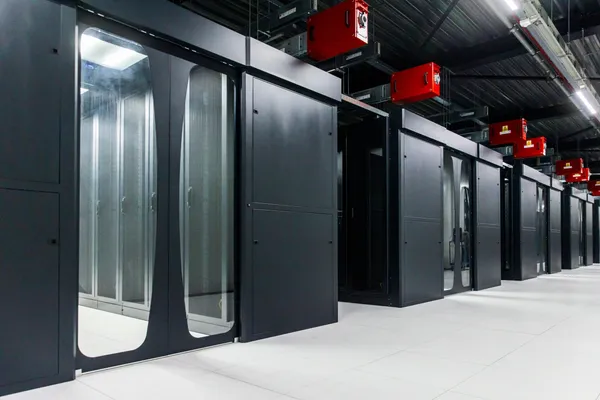Deliver Any IT Functionality As-a-Service

Knowledge blog

In the wake of cloud computing, all kinds of IT functionalities are now being offered as remote services from data centers located all over the globe. Often cloud-based, although not per se. In addition to IaaS, PaaS, and SaaS, we are increasingly coming across new acronyms for IT functionality being delivered as-a-service. In this article, we will present an overview of these various abbreviations currently seen in the market.
Executive Summary – For service providers, the various IT infrastructure services that can be provided to clients on a subscription basis, which are also referred to as XaaS or through more specific designations such as IaaS, PaaS, SaaS, FWaaS, DBaaS, BaaS, DRaaS, NaaS, StaaS, or DaaS, may represent a reliable source of income and a predictable revenue stream, in addition to simplified infrastructure administration and maintenance. When viewed from the perspective of the end client, XaaS in its various forms may also offer a wealth of benefits, some of which include a pricing model that is based on a pay-as-you-go model, increased scalability and flexibility, and improved peace of mind regarding security and compliance. In addition, clients may rapidly and flexibly adjust the size of their IT infrastructure to shifting business needs without having to worry about the expense or difficulty of adding or deleting hardware or software. All in all, buyers of IT as-a-service solutions may have peace of mind knowing that their IT infrastructure is in the hands of experts who have the necessary experience and resources to adapt it to ever-changing business needs in a way that is flexible, cost-effective, secure, and feature-rich.
Exploring the anything-as-a-service model—how every IT functionality is a service
Let’s start by discussing the advantages of an as-a-service business. When discussing all forms of IT capabilities that are now offered via an as-a-service paradigm, we are referring to the umbrella term XaaS, which translates to ‘anything-as-a-service.’ Many service providers though tend to attach a unique acronym to their IT services. We will elaborate on this later-on in this article. We will start with sharing the benefits of utilizing an as-a-service go-to-market model for IT services from a supplier’s perspective.
Using an as-a-service approach to provide customers with IT capabilities has various benefits from the supplier’s point of view. It may for example offer a consistent and reliable income source. Service providers may anticipate their revenue more precisely and have a steady stream of cash by providing services on a subscription basis. Their long-term financial and operational planning and resource allocation may benefit from this.
Additionally, it will be easier to manage the IT infrastructure and perform maintenance. An as-a-service model allows the supplier to put its hardware and software systems in a single, or potentially a small number of data center sites where engineers can rapidly and purposefully undertake preventative and reactive maintenance. Due to the focused and ordered nature of the software’s underlying architecture within the data center environment, including the control the supplier constantly maintains, it will also lower the risks and lessen the likelihood of downtime occurring.
Furthermore, the as-a-service approach makes it possible for IT service providers to easily connect with an expanded number of potential clients on international and even global scales. By providing services remotely from their data center environment, IT service providers may reach potential customers worldwide without being limited by geographic locations. Therefore, choosing an as-a-service delivery model for IT services may lead to rapid expansion of a supplier’s clientele and market reach.
Next to that, utilizing an as-a-service model for IT services delivery will make it easier for suppliers to boost their product offerings while staying flexible when it comes to advancing insight and product amendments. Suppliers may add or remove IT services in accordance with evolving customer demand when using an as-a-service model, which may enable them to react more swiftly to changing market developments. By doing so, this go-to-market approach can help them maintain their competitiveness and continue satisfying clients’ changing needs, now and in the future.
IT As-a-Service: Customer Benefits
An as-a-service approach for the provision of IT infrastructure might offer a variety of benefits from the standpoint of the customer as well. In many cases, the as-a-service model may allow for a pay-as-you-go pricing structure. This can be quite alluring to customers. Buyers may then pay for the IT services they use on a per use or monthly basis rather than having to make a sizable upfront investment in hardware or software. It also enables them to provide a more precise estimate for their IT costs. Due to the ease with which customers may move to the latest top-notch technologies being offered, this can also assist buyers of as-a-service IT solutions in overcoming the investment threshold. It will help them avoid the risk of investing in IT solutions that can rapidly become outdated.
Utilizing an as-a-service model to consume IT infrastructure can also offer greater scalability and flexibility compared to traditional IT systems. Customers may quickly scale their IT services up or down to meet evolving business demands without having to worry about the cost and difficulties of adding or removing hardware or software. Since it enables users to easily adapt their use based on their needs, this may be especially beneficial for organizations whose demand for IT services is seasonal or otherwise variable.
In addition, an as-a-service way of consuming IT infrastructure can provide clients better peace of mind regarding security and compliance. IT service providers frequently have better resources and expertise when it comes to cybersecurity and compliance, which may be especially important to firms managing sensitive data. By outsourcing their IT services to a trustworthy service provider, buyers can usually be sure that their IT infrastructure is being maintained and protected by professionals with the required expertise and resources.
In fact, IT infrastructure delivered as-a-service can relieve its users tremendously. As a buyer of the IT infrastructure, you’re not responsible for operating the IT infrastructure yourself, with all the responsibilities that come with it including finding qualified engineers, procurement, maintenance, any troubleshooting, and meeting potentially stringent uptime requirements. As a customer you can be confident that you’re getting the most recent updates and the IT service provider is in charge if there are any malfunctions or other issues with the service.
IaaS, PaaS, SaaS
The as-a-service solutions IaaS, PaaS, and SaaS are the best-known ones offered in the market. We will briefly discuss them, after which we will move on to the description of the maybe less well-known IT solutions provided as-a-service in the market.
Infrastructure-as-a-Service (IaaS) is meant for businesses looking to outsource the foundation within the data center environment for their IT infrastructure and have it delivered as-a-service. The phrase ‘IaaS’ is used in two different contexts in the market. It may refer to virtualized cloud-based infrastructure as offered by well-known hyperscalers such as Google, Microsoft Azure, and AWS, as well as basic physical server, storage, and network infrastructure offered from the data center in the form of ‘unmanaged hosting.’ Worldstream is actually delivering IaaS services that fall within both definitions of IaaS. Indeed, we provide both physical server, storage, and network infrastructure as well as our own European public cloud platform called WS Cloud.
Platform-as-a-Service (PaaS) is meant for developers looking for an IT development and deployment platform. It offers a cloud-based solution enabling users to create, deploy, and manage applications without having to deal with the hassle of setting up and maintaining the underlying infrastructure to facilitate development. The development, testing, and deployment of applications on a PaaS platform are often supported by various developer services. It may include servers, storage, and networking, but for example also middleware, programming tools, AI services, database management systems, and other developer related resources. PaaS makes it possible to develop applications more affordably since the infrastructural framework is already in place.
Software as a Service (SaaS) is meant for both business users and consumers looking for a complete software solution accessible from any device. Without having to install, administer, or maintain the supporting infrastructure, SaaS provides its users software applications via the internet on a subscription basis. The software application is hosted in the cloud by the service provider that can be accessed by users through a web browser or specialized client software. It enables users to access and utilize these software applications remotely. The SaaS service provider is responsible for keeping the software application and its underlying infrastructure including servers, storage, and networking updated while ensuring that the necessary security patches are applied.
So much for the the XaaS model’s basic variants for offering IT infrastructure in the market. We will now give an overview of the less well-known XaaS model variations. The fact that, in addition to the basic XaaS variants, all sorts of different niche XaaS designations are now emerging is indicative of the increased importance of the as-a-service model for offering and consuming IT infrastructure in this way. Deviating from the general term SaaS, the variety of XaaS solutions shows both the flexibility and scalability provided by these cloud/virtualization-based infrastructure solutions and the rising need for such specialized and readily customized IT infrastructure services. The diversity of XaaS solutions, including their specific designations, reflect the growing demand for such specialized and easily customizable IT infrastructure services and the flexibility and scalability offered by these cloud-based infrastructure solutions.
The Delivery of Anything As-a-Service
- Firewall-as-a-Service (FWaaS) – A classical firewall, which may be physical or virtual, is positioned at the network’s edge to monitor and manage incoming and outgoing network traffic and filter out malicious activities. The same functionality is offered by FWaaS, but it is done so as a cloud-based or otherwise virtualized solution that is managed and hosted remotely from a data center environment by a third-party provider. FWaaS is way more flexible than a traditional firewall solution. It often comes with security measures like traffic filtering, intrusion prevention & detection, URL filtering, application-aware security policy enforcement, and more. These firewall services allow for protection against a variety of networking cybersecurity risks including malware and DDoS attacks. Organizations may use FWaaS to outsource the difficulty of administering and maintaining a firewall to a third-party operator. By doing so, users can also lower their CAPEX investments while enhancing their organization’s security posture. As FWaaS is way more flexible than a traditional firewall solution, its cloud-like agility can be a better fit for cloud-based IT infrastructures including hybrid cloud and multi-cloud deployments. Worldstream offers an unmanaged variation on the typical FWaaS solution which is explained in more detail in a recent article on the subject.
- Database as a Service (DBaaS) – For organizations of all sizes that need to store, manage, and perhaps also analyze data without wanting the effort of maintaining their own database infrastructure, DBaaS may provide a desirable as-a-service solution. All types of databases can be used through the as-a-service model including relational databases, NoSQL databases, object-oriented databases, and more. In most cases, there are no upfront costs for customers of DBaaS. Instead, users tend to pay a fee by the month. They get access to database infrastructure through a web-based interface or API, enabling them to manage and store data remotely as well as execute queries and do data analysis to retrieve information. The service provider takes care of everything, including backups, security, software updates, and maintenance. DBaaS may also include a wide range of service capabilities, including monitoring, alerts, notifications, and geo-replication for enhanced availability. So, as a user you don’t have to worry about the underlying hardware and software infrastructure and potential technical issues at all. Working with a DBaaS service provider will also allow users to quickly scale up database capacity when an organization’s data demands rise. DBaaS may be a smart option from a security standpoint as well since service providers often include robust security features including data encryption, user access controls, and frequent security audits.
- Backup as a service (BaaS) – Organizations may store data backups remotely on a cloud-based platform or in an otherwise virtualized environment using BaaS. In addition, BaaS may aid in the defense of data from viruses, ransomware, and other risks, while in the case of a calamity, it helps organizations to safeguard their data. In contrast to conventional backup procedures, BaaS may provide a whole spectrum of data backup services, including data backup, data recovery, as well as data protection including data encryption. Depending on perhaps specific compliance requirements, BaaS can be a wise choice for many organizations and provide a cost-effective and easy-to-manage backup solution. A BaaS solution usually needs a solid internet connection with enough speed to send data to the distant servers without significantly affecting other network operations. The quantity of organizational data being backed up, how often those backups occur, and the degree of network congestion may all affect the bandwidth needs for a unique BaaS solution. When selecting a fitting BaaS offering, it’s crucial to keep in mind that BaaS service providers could provide bandwidth optimization tools like incremental backups, deduplication, and compression to reduce the impact on the network’s resources. To further reduce potential network congestion, service providers could also give the option to schedule backups during off-peak times.
- Disaster Recovery as a Service (DRaaS) – Power outages, system malfunctions, hacking, DDoS attacks, a fire outbreak, an earthquake, or flood, an organization’s IT systems can go down for a variety of reasons. To safeguard business data and operational progress and to promptly restore operations, one will need a disaster recovery solution. DRaaS makes it rather easy to deploy a backup and disaster recovery solution. Although there are various ways to execute a disaster recovery infrastructure from a technology perspective, it’s often the case that the compute, storage, networking, and application services of an IT ecosystem are replicated by a DRaaS model onto cloud or otherwise virtualized compute environments hosted by a service provider’s (hybrid) IT infrastructure. In contrast with BaaS, data security is not the only concern. With DRaaS, equipment that may be harmed must also be secured. Previously, it could be quite costly, especially for larger organizations, to implement a solid disaster recovery strategy. With DRaaS, organizations may purchase this from a service provider on a monthly subscription basis or even through a pay-per-use model. Depending on the requirements of a user’s SLA (service level agreement) and their degree of knowledge, DRaaS may come in a variety of flavors, from completely managed to unmanaged to variations in between.
- Network as a Service (NaaS) – The deployment, management and maintenance of network infrastructure can be a very cost intensive, knowledge intensive and time-consuming endeavor for organizations. By utilizing NaaS, businesses may contract out the administration and upkeep of their network infrastructure operations to a company that specializes in network management. Without having to purchase and maintain their own networking equipment and accompanying software infrastructure, users of NaaS may access and utilize networking resources like switches, routers, firewalls, and bandwidth remotely using a web-based interface or API. The service provider will handle all kinds of network management responsibilities such as network configuration, administration, monitoring, and setup. Virtual private networks (VPNs), multiprotocol label switching (MPLS), and other legacy network architectures, also including load balancers and firewalls, may all be replaced with NaaS. The unique use case and organizational needs will determine if NaaS can fully replace existing networking solutions though. Compared to conventional, hardware-based network services, the cloud-based or otherwise virtualized network services offered by NaaS are more flexible and customizable, enabling IT teams to quickly adapt their corporate network infrastructure to evolving business needs.
- Storage as a Service (StaaS) – Other than StaaS, a conventional storage infrastructure architecture for an organization may face quite some challenges. One is that the amount of storage needed pretty much always keeps growing. Thus, organizations must often buy additional storage capacity against relatively high upfront costs. Next to CAPEX oriented storage infrastructure investments, lengthy delivery delays of storage equipment may also be an obstacle when employing a conventional approach. In addition, an organization should always deploy more storage infrastructure than they really require, which can become quite costly over time. STaaS was first thought of as a cost-effective solution for SMBs lacking the technical expertise and financial resources to create and run their own storage infrastructure. Nowadays, STaaS is used by businesses of all sizes. Both object storage and block storage can be offered through an as-a-service delivery model, making it a good fit for different types of storage. Another type of STaaS is file storage, which is a more traditional type of storage. In the case of file storage, network attached storage (NAS) tends to be used to store the data. Due to this straightforward approach file storage remains a familiar and surefire option to store data. StaaS may also increase data accessibility while at the same time offering a greater level of data security within the storage environment. Moreover, StaaS is able to automate many processes while increasing the (cost) efficiency of storage—synchronization, collaboration, and file sharing tend to be readily available with StaaS. For a range of businesses and applications, StaaS may therefore provide a contemporary storage solution.
- Desktop as a Service (DaaS) – A DaaS solution offers a cloud-based or otherwise virtualized remote desktop solution that is provided by a third-party service provider, in contrast to Virtual Desktop Infrastructure (VDI), which is the on-premises variation of a virtualized desktop infrastructure. When it comes to workspace setup and management, VDI already provides more flexibility and cost effectiveness compared to the prior traditional office automation and setup. DaaS takes it a step farther in terms of flexibility, (cost) efficiency, and management of the desktop infrastructure, as well as in terms of the capabilities it may provide. With DaaS, there is no need for a virtualization specialist on staff which can be advantageous in these times of labor shortages. In addition, with DaaS, an organization just pays for what it uses while there are no significant upfront costs. It’s an OPEX oriented desktop infrastructure solution protecting a business from excessive investment expenses. It is also incredibly scalable, both upwards and downwards, which makes DaaS a perfect alternative for highly dynamic organizational environments where staff growth and decline typically are part of the business. At the same time, the as-a-service desktops delivered by DaaS can be a good fit for startups, SMBs, and other organizations sizes as well, as its OPEX related expenses, its flexibility and functionality capabilities might be appealing to many businesses.
Worldstream’s Infrastructure Solutions
All the as-a-service solutions described above can be easily and efficiently deployed regionally and globally by service providers. The Worldstream network is backed by a global network backbone, meaning that an as-a-service offering can be deployed and offered anywhere this network has presence globally. WS Cloud, Worldstream’s public cloud platform can also play a role in setting up such as-a-service solutions.
Find all our Worldstream as-a-service solutions here. If you are interested in our cloud solutions, discover private cloud here and WS Cloud here.
You might also like:
- IaaS and the rise of As-a-Service.
- The difference between Bare Metal Cloud and Dedicated Servers.
- Choosing strategically between Public and Private Cloud.
Have a question for the editor of this article? You can reach us here.

Latest blogs
The Ultimate Gaming Latency Guide: How to Eliminate Lag and Maximize FPS
Knowledge blog

Growing smarter with less maintenance

Knowledge blog

Worldstream and Nokia Join Forces for Next-Gen DDoS Protection

News

Worldstream unveils new positioning and offers customers more control over their digital infrastructure

News

5th Gen AMD EPYC 9355P – Now Live at Worldstream

News

Nokia strengthens Worldstream’s hosting security with advanced DDoS Protection in the Netherlands.

News
